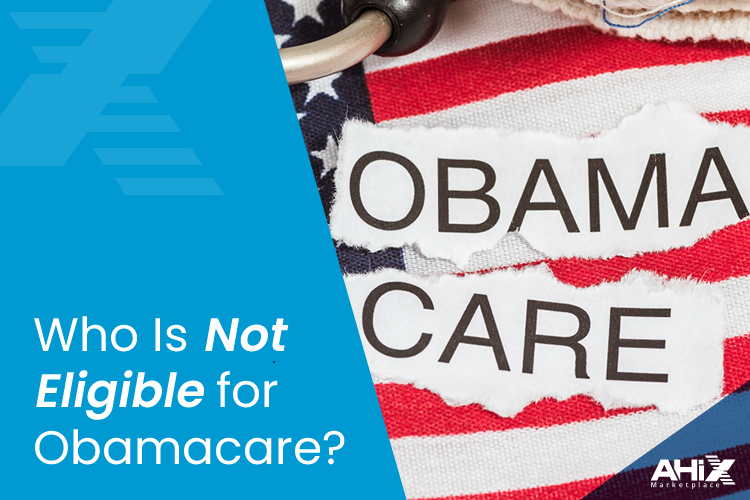Health insurance is a crucial part of managing your healthcare and financial well-being. With open enrollment 2025 just around the corner, it’s the perfect time to familiarize yourself with the process of securing individual health insurance in Arizona. Whether you’re new to the state or looking to switch plans, this guide will walk you through everything you need to know to get individual health insurance in Arizona.
1. Understanding Open Enrollment
Open Enrollment Period (OEP) is a designated time each year when you can sign up for health insurance or make changes to your existing plan. For 2025, the open enrollment period ran from November 1, 2023, to January 15, 2025. During this window, you can:
- Enroll in a new health insurance plan in Arizona.
- Renew or change your current plan.
- Apply for premium subsidies or cost-sharing reductions.
Open enrollment is the only time you can sign up for health insurance, unless you qualify for a special enrollment period due to a significant life event. Missing this window means you might have to wait another year to get coverage, so it’s crucial to be aware of these dates and act promptly.
2. Determine Your Eligibility
To get individual health insurance in Arizona, you need to ensure you’re eligible. Generally, you are eligible if you:
- Are a resident of Arizona.
- Are a U.S. citizen, a national, or a lawfully present immigrant.
- Are not incarcerated.
It’s important to gather the necessary documentation beforehand, such as proof of residency, citizenship, or immigration status. This preparation will streamline your application process and help avoid any potential delays.
3. Explore Arizona individual health insurance Options
In Arizona, you have several options for individual health insurance:
Health Insurance Marketplace
The Health Insurance Marketplace, also known as the exchange, is a platform where you can compare and purchase health insurance plans. It’s accessible online at Healthcare.gov. The Marketplace offers a variety of plans categorized into different tiers (Bronze, Silver, Gold, and Platinum) based on the level of coverage and out-of-pocket costs.
Private Insurance Companies
You can also buy individual health insurance in Arizona directly from private insurance companies. Some popular providers in Arizona include:
- Blue Cross Blue Shield of Arizona: Known for a wide network of providers and comprehensive coverage options.
- Cigna: Offers a variety of plans with competitive premiums and extensive wellness programs.
- Ambetter: Provides affordable health insurance plans with a focus on preventive care and customer service.
Medicaid and AHCCCS
If your income falls below a certain level, you may qualify for Medicaid or the Arizona Health Care Cost Containment System (AHCCCS). These programs offer free or low-cost coverage for eligible individuals and families.
4. Compare Plans and Costs
When selecting a plan, consider the following:
Premiums
This is the amount you pay each month for your health insurance. Plans with lower premiums often have higher out-of-pocket costs and vice versa. It’s essential to find a balance that suits your financial situation and healthcare needs.
Deductibles
The amount you pay out-of-pocket for healthcare services before your insurance starts to pay. Higher deductibles usually mean lower monthly premiums, but it also means you’ll pay more upfront for your healthcare needs.
Copayments and Coinsurance
These are the costs you share with your insurance company for covered services. Copayments are fixed amounts you pay for specific services, while coinsurance is a percentage of the service cost you pay after meeting your deductible.
Network Providers
Make sure your preferred doctors and hospitals are in the plan’s network. Using out-of-network providers can significantly increase your healthcare costs.
Coverage and Benefits
Review the plan’s benefits to ensure it covers your medical needs, including prescriptions, specialists, and preventive care. Some plans may offer additional benefits like dental, vision, or wellness programs.
5. Financial Assistance
Depending on your income, you might qualify for financial assistance to help cover the cost of your Arizona individual health insurance:
Premium Tax Credits
These can lower your monthly premium if your income is between 100% and 400% of the federal poverty level. The amount of the credit is based on your income, household size, and the cost of health insurance in your area.
Cost-Sharing Reductions
These can reduce your out-of-pocket costs if you choose a Silver plan and your income is up to 250% of the federal poverty level. These reductions lower your deductibles, copayments, and coinsurance, making healthcare more affordable.
6. Enroll in a Plan
Once you’ve chosen an Arizona individual health insurance plan, you can enroll through:
AHiX Marketplace
Offering a seamless application process for individual health insurance, available both online and by phone. You can explore the same plans and pricing as healthcare.gov, with tools to compare different plans and find the best fit for your needs.
Insurance Company Website
If you’re buying directly from a private insurance company, visit their website to complete the enrollment process. Make sure to review all plan details and ask for assistance if needed.
The Health Insurance Marketplace
Visit Healthcare.gov to create an account, fill out an application, and select your plan. The website provides tools to compare plans and check for financial assistance eligibility.
By Phone or In Person
You can also enroll by calling the Marketplace Call Center or getting help from a certified enrollment counselor or insurance agent. These professionals can provide personalized assistance and answer any questions you may have.
7. Special Enrollment Periods
If you miss the open enrollment period, you might still be able to get Arizona individual health insurance through a special enrollment period (SEP) if you experience certain life events, such as:
- Losing other health coverage.
- Getting married or divorced.
- Having a baby or adopting a child.
- Moving to a new area.
- Offered employer ICHRA or QSEHRA
These events allow you to enroll in or change your health insurance plan outside of the regular open enrollment period. It’s essential to act quickly after a qualifying event, as SEPs typically last 60 days from the event date.
8. Understanding Health Insurance Terms
Health insurance jargon can be confusing. Here are some key terms to know:
-
Premium
The amount you pay for your health insurance every month.
-
Deductible
The amount you pay for covered healthcare services before your insurance plan starts to pay.
-
Copayment (Copay)
A fixed amount you pay for a covered healthcare service after you’ve paid your deductible.
-
Coinsurance
Your share of the costs of a covered healthcare service, calculated as a percentage of the allowed amount for the service.
Out-of-Pocket Maximum
The most you have to pay for covered services in a plan year. After you spend this amount on deductibles, copayments, and coinsurance, your health plan pays 100% of the costs of covered benefits.
Understanding these terms will help you compare plans more effectively and make informed decisions about your Arizona individual health insurance.
9. Check for Plan Changes
Even if you’re happy with your current plan, it’s important to review it during open enrollment. Plans and benefits can change from year to year, affecting your coverage and costs. Make sure your plan still meets your needs and budget.
10. Get Help if You Need It
Navigating Arizona individual health insurance can be complex. Don’t hesitate to seek assistance:
Certified Enrollment Counselors and Navigators
These professionals can provide free, unbiased help with choosing and enrolling in a health insurance plan.
Insurance Agents and Brokers
They can offer advice and help you find a plan that suits your needs. Agents and brokers may receive commissions from the carrier for enrolling clients in specific plans, so be sure to ask about any potential conflicts of interest.
Online Resources
Websites like Healthcare.gov offer comprehensive information and tools to assist with your health insurance decisions.
Pros and Cons of Individual Health Insurance
Pros
- Flexibility and Choice: Choose from a wide range of plans that fit your specific needs.
- Portability: Coverage remains with you regardless of job changes.
- Customizable Coverage: Tailor your plan to include dental, vision, and more.
- Control over Healthcare: More freedom in selecting doctors and making healthcare decisions.
Cons
- Higher Costs: Premiums and out-of-pocket expenses can be higher than employer-sponsored plans.
- Complex Selection Process: Comparing and choosing plans can be challenging.
- Eligibility and Underwriting: Pre-existing conditions may result in higher premiums or denial.
- Variable Coverage Quality: Coverage can vary widely, and some plans may have limited benefits.
Arizona Individual health insurance offers flexibility and control but can come with higher costs and complexities. Evaluating your needs and budget is crucial in making the right choice.
Conclusion
Choosing the right individual health insurance plan in Arizona during the 2024 open enrollment period doesn’t have to be daunting. By understanding your options, comparing plans, and seeking assistance when needed, you can find a plan that meets your healthcare needs and budget. Remember, having health insurance is not just a legal requirement but a crucial step in ensuring your health and financial well-being.
Frequently Asked Questions about Arizona individual health insurance
1. What if I miss the open enrollment period?
If you miss the open enrollment period, you may qualify for a special enrollment period due to certain life events such as losing other coverage, getting married, or having a baby. It’s important to act quickly, as the special enrollment period typically lasts 60 days from the event date. If you do not qualify for a special enrollment period, consider a Short-Term medical plan.
2. Can I change my health insurance plan after enrolling?
Yes, you can change your plan during the open enrollment period or if you qualify for a special enrollment period due to a life event. Make sure to review the new plan’s benefits, costs, and network providers before making a switch.
3. How do I know if I qualify for financial assistance?
Your eligibility for financial assistance is based on your household income and size. You can use the AHiX subsidy calculator to check your eligibility for premium tax credits and cost-sharing reductions. These tools will help you estimate the amount of assistance you may receive.
4. What documents do I need to enroll in a health insurance plan?
You’ll need personal information (like your Social Security number), income details, and information about any current health insurance. Having these documents ready will streamline your application process and help avoid delays.
5. Can I get coverage for pre-existing conditions?
Yes, under the Affordable Care Act, all Marketplace plans must cover treatment for pre-existing medical conditions. Insurers cannot deny you coverage or charge you more based on your health history.
By following these steps and utilizing available resources, you can confidently navigate the open enrollment process and secure the best individual health insurance plan for your needs in Arizona.



